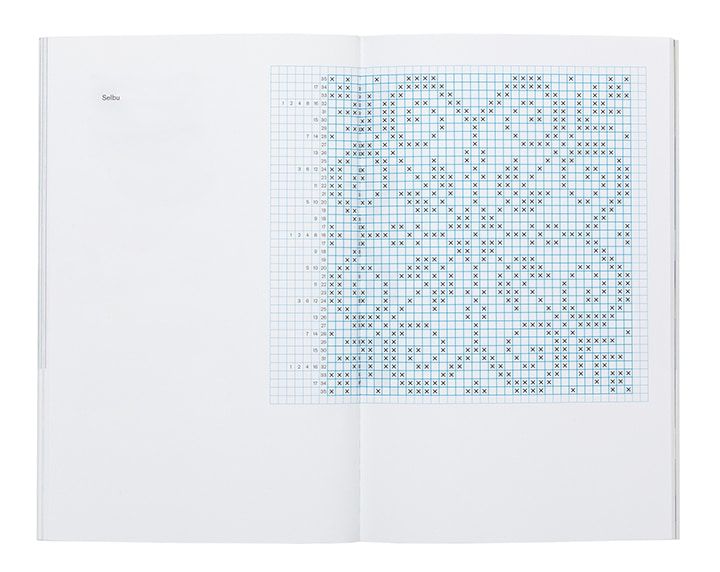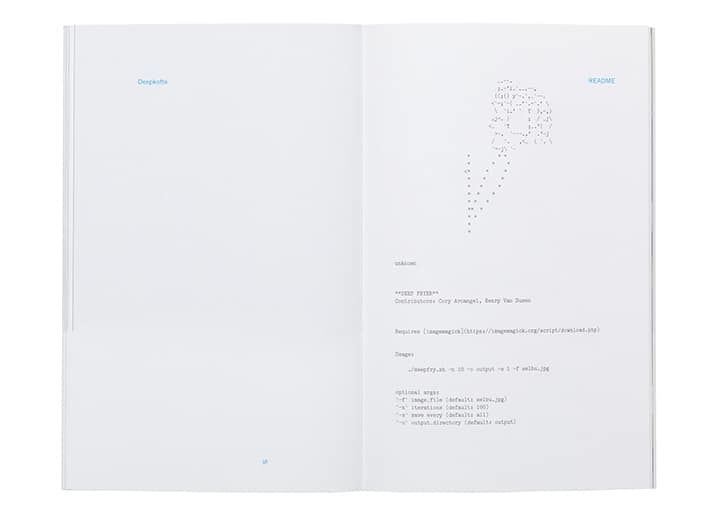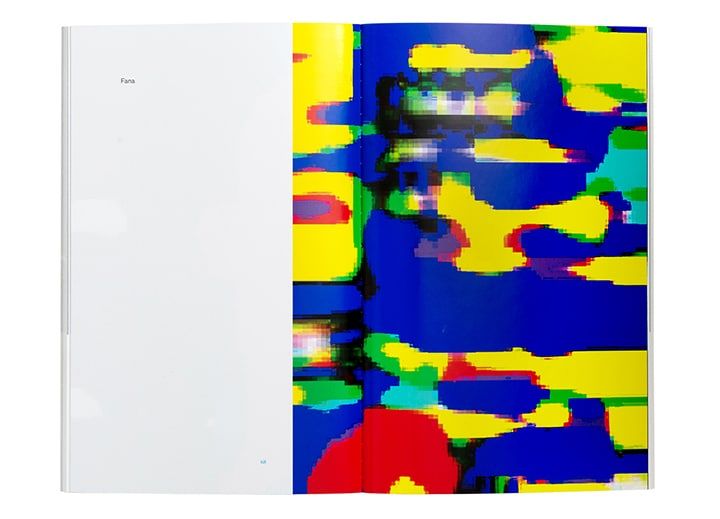Speaking of scores, I would feel remiss if I didn’t at least mention this project in relation to Fluxus scores of the 1960s-70s. While speaking with Arcangel and Janvin, I asked if they were influenced by Fluxus. While Arcangel admitted to realizing that Nam June Paik is one of the top five greatest artists of all time, they reminded me that a score is largely how music functions, how it travels and is transmitted. Many Fluxus artists adopted the concept of a score for their performance pieces and instructions for projects to be completed by viewers. However Identity Pitches is less connected to this art history and rather rooted directly in the functions and methodologies of music.
Towards the back of the book is a conversation between Arcangel and Janvin, through which the reader can gain an inside look into their personal interests and approaches to the project, as well as their process. This is where the questions of identity are most heavily elucidated. After living abroad for nearly six years, Janvin returned to Norway and saw the local geography and culture with fresh eyes. In her explorations of what it means to be authentically “Norwegian” she was drawn to extant folk traditions such as the bunad, lusekofta, music, and dance. On the other hand, as a New Yorker now living in Norway, Arcangel was impressed by the ubiquitous and un-ironic use of the lusekofta across nearly all demographics. From this point, and over the course of several years, their ideas slowly developed, devolved, dissipated and came back together into a cohesive and tightly focused project – the first phase of which is this book.
The book ends with color images of the new, deep-fried sweater patterns – a warped mirror image of the pictures of traditional sweaters at the beginning of the book. It’s easy to imagine these as contemporary sweaters sold at a high-end design boutique. They’re bright, blocky, and graphic, reminding me of the Gee’s Bend community’s take on traditional quilting, artist Ahmed Umar’s reinterpretation of the Norwegian bunad, and Yinke Shonibare’s merging of Ankara fabrics and colonial European dress.










